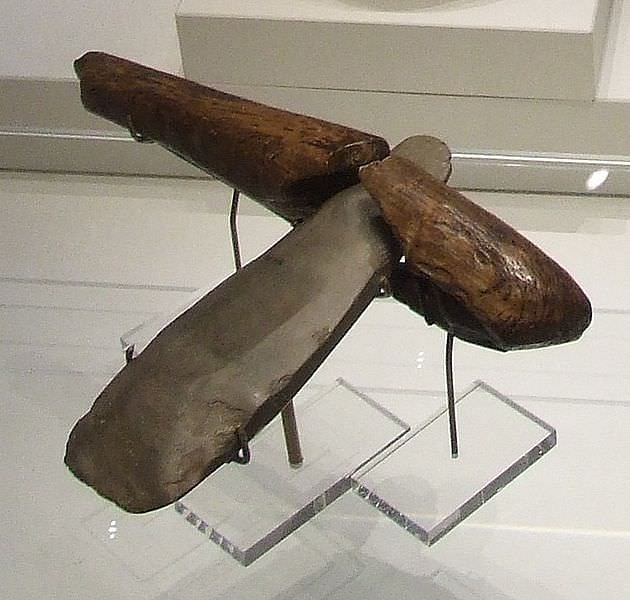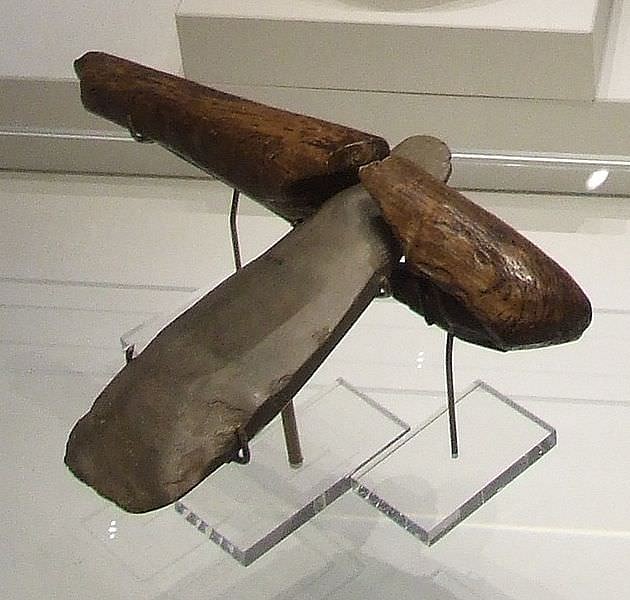Introduction: The Dawn of Warfare
Imagine a world where survival depended on sharpened stones and wooden spears. Ancient weapons were not just tools of war; they were instruments of survival, hunting, and human ingenuity. From the earliest stone-tipped arrows to the gleaming steel swords of empires, the evolution of weapons shaped the course of human history. This journey from stone to steel is a testament to humanity’s relentless drive to innovate in the face of conflict.
The story of ancient weapons begins in the prehistoric era, where early humans crafted the first tools for hunting and protection. These rudimentary weapons laid the foundation for the sophisticated arms that would later define civilizations.

Stone Age Tools – World History Encyclopedia
Prehistoric Weapons: Stone Tips, Arrows, and Bows
The earliest weapons were simple yet revolutionary. Around 64,000 years ago, stone-tipped arrows were discovered in South Africa, marking a significant leap in human technology. These weapons allowed early humans to hunt more effectively and defend themselves against predators.
The bow and arrow, developed later, became a game-changer in both hunting and warfare. Its ability to strike from a distance gave early humans a tactical advantage, transforming the way battles were fought. These innovations set the stage for the next major leap in weaponry: the transition from stone to metal.
The Advent of Metal Weapons: Copper and Bronze Ages
The discovery of pure copper around 5,000 BCE marked the beginning of the Copper Age. However, it was the creation of bronze—a mix of copper and tin—that truly revolutionized warfare. Bronze weapons, such as spears, dagger-axes, and composite bows, were stronger, sharper, and more durable than their stone counterparts.

Early Bronze Age swords, Central Europe
This technological advancement gave rise to the Bronze Age, a period where empires like the Egyptians and Mesopotamians began to dominate. Bronze weapons became symbols of power, enabling armies to conquer and defend territories with greater efficiency.
Chariot Warfare and Its Impact on Military Strategy
Around 2,000 BCE, the Sumerians introduced chariots to the battlefield, forever changing military strategy. These horse-drawn vehicles were fast, mobile, and deadly, especially when equipped with archers. The Hyksos and Egyptians later adopted chariots, using them to devastating effect in battles.
Chariot warfare highlighted the importance of speed and coordination in combat. It also influenced the development of new weapons, such as swords, which were better suited for close-quarters fighting.
The Role and Evolution of Swords in Combat
Swords like the Egyptian khopesh and the Roman gladius became iconic symbols of ancient warfare. The khopesh, with its curved blade, was designed for slashing and chopping, while the gladius was a short, double-edged sword perfect for thrusting in tight formations.
These weapons were more than just tools of war; they were cultural artifacts that reflected the values and strategies of the societies that wielded them. As warfare evolved, so did the design and functionality of swords, making them indispensable on the battlefield.
Cultural and Technological Influence of Weapons in Warfare
The development of weapons was closely tied to the rise and fall of empires. Advances in metallurgy, trade, and military strategy fueled an arms race that shaped the ancient world. Weapons became symbols of power, wealth, and technological prowess, influencing everything from politics to art.
This relentless drive for innovation laid the groundwork for modern warfare. The lessons learned from ancient battles continue to resonate today, reminding us of the enduring impact of human ingenuity.
Conclusion: The Legacy of Ancient Weapons
From stone-tipped arrows to steel swords, ancient weapons tell the story of humanity’s struggle for survival and dominance. They remind us that innovation often arises from necessity, and that the tools we create can shape the course of history.
The legacy of ancient weapons lives on, not just in museums, but in the technologies and strategies that define modern warfare. As we look back at these remarkable inventions, we gain a deeper appreciation for the ingenuity and resilience of our ancestors.
References:
Stone Age Tools – World History Encyclopedia – link
Early Bronze Age swords, Central Europe – link
Middle Bronze Age weapons – link
Bronze weapons – link
Nordic Bronze Age swords and spears – link
Categories: Archaeology, History, Military History, War History
Tags: Ancient Weapons, bronze age weapons, chariot warfare, stone age tools, swords, warfare evolution
Religion: N/A
Country of Origin: Egypt, Mesopotamia, Rome, South Africa, Sumer
Topic: Ancient Weapons and Warfare
Ethnicity: N/A



